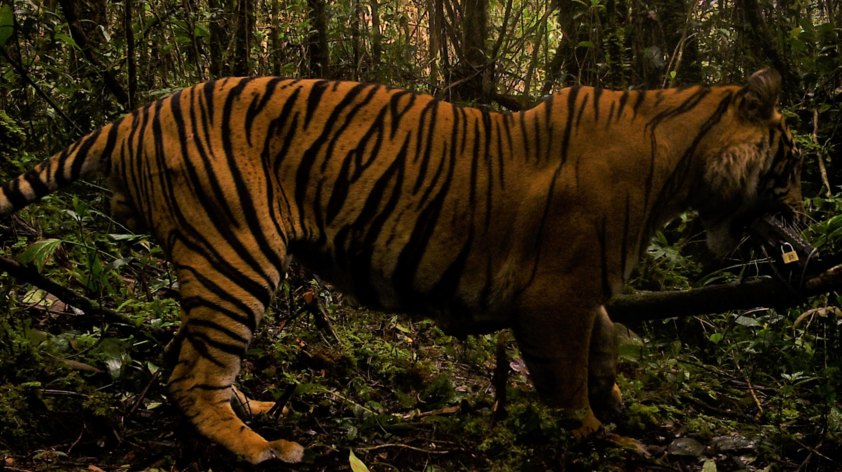
Forest fragments play an important role in Sumatran tiger conservation
After the Global Tiger Initiative (GTI) was launched in 2007, global resources to protect the last remaining tiger populations have been focused on large, protected tiger conservation landscapes (TCL). In Sumatra, Indonesia, this includes six priority tiger landscapes. As a result, tigers living in smaller, and unprotected landscapes have received little attention and funding. While the outlook for Sumatran tiger conservation in the priority landscapes looks promising, tigers living in small, human-dominated, landscapes have to share spaces with local inhabitants, leading to high levels of mortality due to conflict.
Between 2001 and 2016, about 15% of the remaining tiger population in Sumatra was killed due to conflicts with human, mostly in small human-dominated landscapes outside protected areas. While the strategy applied by the GTI to protect core habitats does make sense, given the limited resources, losing that many tigers from underfunded small landscapes is unsustainable and requires immediate attention from the conservation community.
In 2017, with support from San Diego Zoo Global, SINTAS Indonesia, West Sumatra Conservation Agency (BKSDA), and University of Andalas, were the first to establish a long-term research and conservation program to study the ecology of Sumatran tiger in a heavily human-dominated landscapes in West Sumatra.
Adjacent to the largest protected area in Sumatra and the UNESCO’s world heritage site of Kerinci Seblat National Park, West Sumatra has been identified as having one of the highest number of human-tiger conflict incidents among the eight provinces on the island of Sumatra. We employ a variety of techniques and technologies to better understand how tigers use these human-dominated and often heavily degraded landscapes. Sign surveys tell us which areas tigers occupy while camera traps allow us to get more detailed information on tiger presence and allow us to estimate tiger densities.
Soon we will deploy GPS collars to better understand how tigers move through landscapes managed by humans and will test novel genetic methods to more easily confirm the presence of tigers and to look at connectivity among protected areas.
Our team of four young field biologists and graduates from University of Andalas, so far has completed sign surveys in 39 grid cells of 17 x 17 km, which are part of a Sumatra-wide tiger survey currently going on. They have also installed camera traps at 79 locations within the core area of our study region. So far we detected tigers in 25 grid cells (64%), indicating that tigers can survive even in these highly disturbed landscape. The proportion of grid cells with tiger presence was even higher than for four of the six priority tiger landscapes in Sumatra set up by the Government of Indonesia for tiger recovery, including Leuser Ecosystem, Bukit Barisan Selatan, Berbak – Sembilang, and Kampar - Kerumutan. Our camera traps have photographed a total of 28 species, including five endangered and elusive species namely the Sumatran tiger, the Malay tapir, the Sumatran pangolin, the Sumatran dhole, and the black-crested Sumatran langur.
Overall, these preliminary results indicate that heavily degraded, human-dominated, landscapes have the potential to serve as buffer zones for the Sumatran tiger population adjacent to core tiger habitats.
However, effective and locality specific management strategy are urgently needed to stop further loss of tiger individuals from these buffer areas. Our study has also provided the first strong evidence that forest patches in human dominated landscapes can serve as a biodiversity-rich habitat network for the entire West Sumatra landscape. This study, therefore, provides a critical baseline information for the government’s national initiative to identify and protect critical areas outside of the protected area networks to be designated as structural corridors and essential ecosystem areas.













